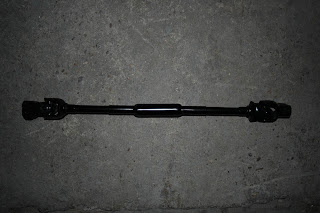Quick and dirty trial fit just to get it in my mind that it's feasable.
Inside view near the filler.
Next time I will bend the opposite corner and then decide wether I will keep this panel or bend a new one. With two millimeters it's a little thicker (and heavier) than the original panel. And with all the trials and handling, there are some minor dents in it. So maybe the final version will be 1 or 1,5mm and hopefully with less scratches.
And an easy one to finish the day with some plumbing work. This is the high pressure pre pump filter which fits between the surge tank and the high pressure fuel pump.
Cheers.














































